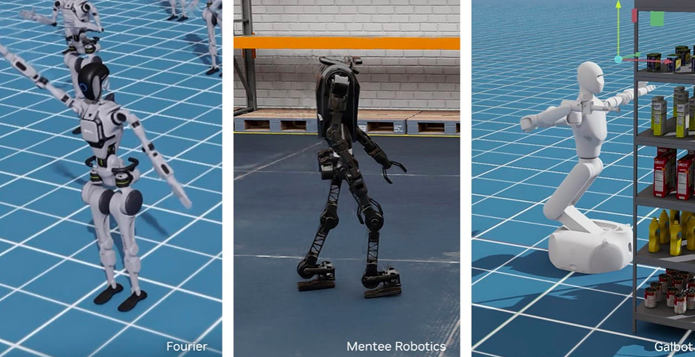Robot Revolution: Ai-Da’s Turing Portrait Shatters Expectations
In a landmark moment for the fusion of art and technology, Ai-Da, the world’s first humanoid robot artist, created a portrait of Alan Turing that sold for an astounding $1.08 million at Sotheby’s. Titled A.I. God, the artwork features symbolic muted tones and fragmented facial planes, reflecting Turing’s historic impact on computing and his warnings about AI’s future. Originally valued at $120,000–$180,000, the piece drew 27 competitive bids before being sold to an anonymous U.S. buyer, highlighting a growing appetite for AI-driven art.

Ai-Da, developed by Aidan Meller with contributions from roboticists and AI experts, is named after Ada Lovelace and equipped with advanced systems enabling her to analyze images and create art. The portrait’s inspiration was rooted in Turing’s pivotal role in computer science and his prescient concerns about AI’s potential. Through this sale, Ai-Da’s work has set a new benchmark, sparking discussions on AI’s intersection with creativity and ethics.
NVIDIA Pioneers Next-Gen Humanoid Robotics with AI-Powered Tools
At the Conference for Robot Learning (CoRL) in Munich, NVIDIA introduced transformative tools for AI-enabled robotics. The release of NVIDIA Isaac Lab 1.2, an open-source framework, allows developers to train robot policies for diverse applications, including humanoid robots. Project GR00T, another highlight, offers six advanced workflows to streamline the creation of humanoid capabilities such as mobility and whole-body control. Additionally, NVIDIA’s Cosmos tokenizer and NeMo Curator significantly speed up video data processing—critical for building predictive world models in robotics—achieving up to 12x faster performance than current technologies.

These innovations are already being adopted by robotics leaders like 1X and XPENG Robotics, showcasing NVIDIA’s commitment to driving forward the capabilities of humanoid robotics. With efficient data compression and enhanced visual processing, these tools enable developers to train robots for complex, long-term interactions while reducing development time and costs. Through strategic collaborations and extensive workshops, NVIDIA is expanding the possibilities for embodied AI and fostering a robust ecosystem for robot learning.
XPeng Unleashes Future of AI Mobility with Groundbreaking Tech and Humanoids
At its 2024 AI Day, XPeng Motors showcased transformative innovations, emphasizing its focus on AI-integrated mobility. A centerpiece of the event was XPeng’s proprietary Turing AI chip, a 40-core processor capable of managing models with up to 30 billion parameters. This development supports high-speed data processing and underpins the new Canghai Platform, which promises Level 4 autonomous driving by 2025 with enhanced safety, bandwidth, and imaging features.

Adding to the excitement, XPeng introduced “Iron,” a humanoid robot that mirrors human-like movements, powered by the Turing chip. The robot’s capabilities were demonstrated through a video where it mimicked famous statues. XPeng also revealed ambitious air mobility projects, including a modular eVTOL and a hybrid tilt-rotor with a 500 km range, while surprising attendees with its Kunpeng Super Electric System—a gas-powered range extender boasting a combined 1,400 km range, shifting the company’s all-electric strategy.
AI De-Aging Transforms Hollywood: A Glimpse into the Future of Filmmaking
Hollywood is embracing artificial intelligence in a groundbreaking way, as seen in Robert Zemeckis’ $50 million film Here, where AI-powered de-aging technology is used to rejuvenate Tom Hanks and Robin Wright across six decades. This cutting-edge innovation, developed by Metaphysic, uses generative AI to instantly transform the actors’ faces, revolutionizing the process of aging characters. Unlike traditional CGI, which often requires lengthy post-production, the real-time transformation of Hanks and Wright’s faces allows for a more seamless, efficient filmmaking experience. Metaphysic’s AI technology has already been utilized in two other major 2024 films, Furiosa: A Mad Max Saga and Alien: Romulus, signaling a significant shift in Hollywood’s approach to visual effects.

The impact of AI extends beyond Here, as the technology enables filmmakers to unlock new storytelling possibilities. Imagine seeing beloved characters age naturally across decades, or historical figures brought to life with incredible realism. This transformative approach to visual effects isn’t just about de-aging; it’s about creating entirely new cinematic experiences. As AI continues to evolve, its potential to enhance creativity in filmmaking and even revolutionize other industries, such as music composition, becomes clear. With AI at the forefront, Hollywood is on the brink of an age-defying future where the limits of storytelling are constantly pushed.
